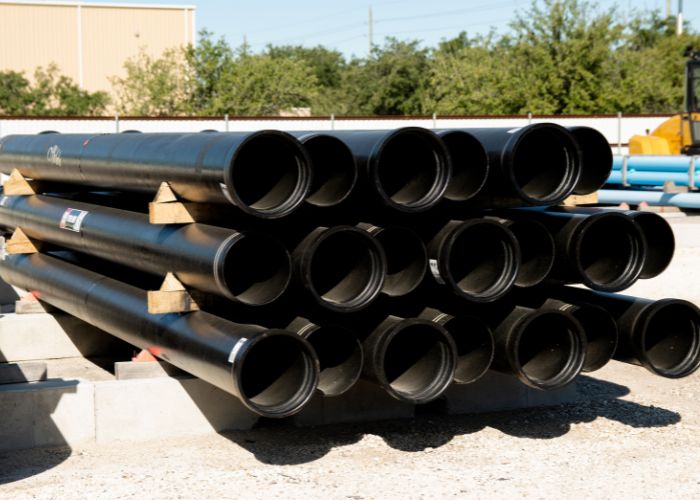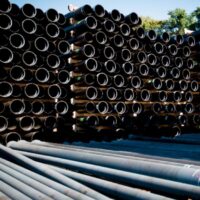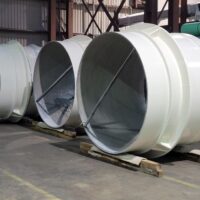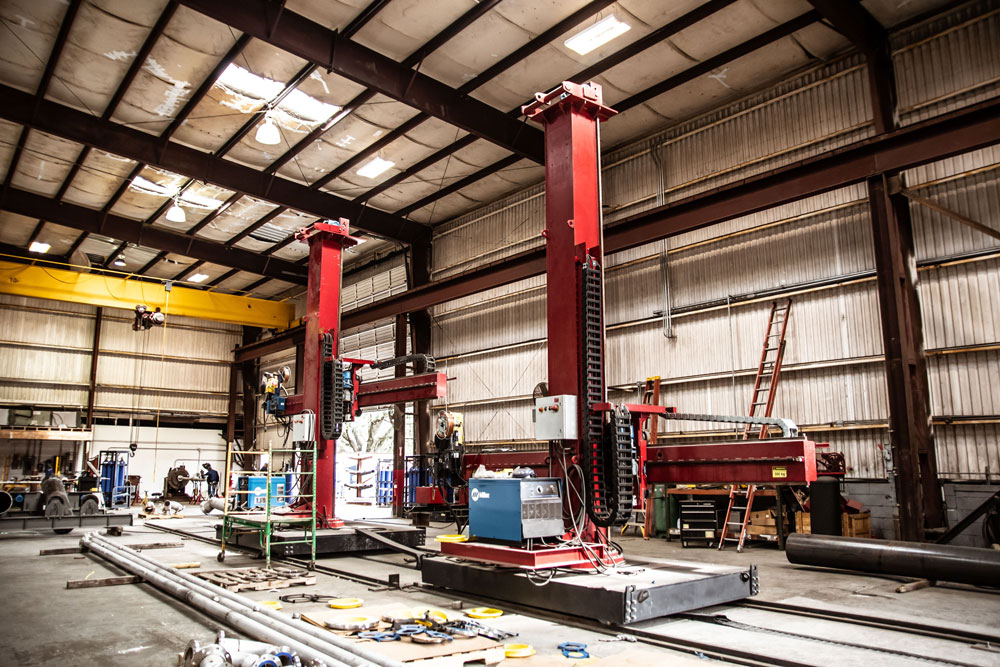
Ductile Iron Pipe vs Steel Pipe: Expert Guide to Making the Right Choice
Choosing the Right Material for Your Water Infrastructure
Water infrastructure typically serves communities for 50-100 years, making material selection a multigenerational investment that can prevent premature failures, contamination risks, and excessive maintenance costs. This decision can significantly impact installation efficiency, long-term performance, maintenance requirements, and overall project costs. This guide compares ductile iron pipe vs steel pipe to help you determine which material best suits your specific project needs.
Ductile Iron Pipe vs Steel Pipe
Material Properties

Ductile Iron Pipe:
- Higher carbon content (3.0-3.9%)
- Spheroidal graphite structure
- Thicker walls for added strength

Steel Pipe:
- Lower carbon content (typically less than 0.4%)
- Excellent tensile strength
- Typically thinner walls than ductile iron
Installation Considerations
Ductile Iron Pipe Advantages:
Installation challenges can significantly impact project timelines and budgets, while the right material choice reduces these risks and ensures a system that performs as designed for decades.
- Push-on joints allow deflection for navigating obstacles
- Installation possible in various weather conditions
- Shorter pipe sections (18-20 feet) for easier handling
- No welding is required for standard installations
According to DIPRA, ductile iron joints can deflect up to 5 degrees, providing natural curve-following capabilities without specialized fittings [1].
Steel Pipe Considerations:
- Requires welded joints for most applications
- Weather-sensitive installation process
- Longer sections (40-50 feet) mean fewer joints but heavier handling
- Needs skilled welders for proper installation
At Freedom Waterworks, our state-of-the-art 45,000 sq. ft. facility houses skilled welders and advanced automated welding processes to ensure quality fabrication for both materials.

Performance and Durability
Pressure Ratings and Structural Strength
The long-term performance of your water infrastructure directly affects public health, community development, and operational budgets. Here are a few things to consider when it comes to performance:
Ductile Iron Pipe:
- Conservative design with thicker walls
- Excellent external load resistance
- Rigid structure maintains shape under pressure
Steel Pipe:
- Thinner walls designed closer to minimum requirements
- Requires more attention to bedding and support
- Greater flexibility can be advantageous in certain applications
Corrosion Protection
Ductile Iron:
- A natural oxide layer forms during manufacturing
- Polyethylene encasement provides passive protection
- Cement-mortar lining protects interior surface
Steel Pipe:
- Requires protective coatings and linings
- May need more extensive maintenance
Hydraulic Efficiency and Energy Costs
Ductile iron pipe typically has larger internal diameters than comparable steel pipe, potentially reducing friction losses and pumping energy requirements [2]. This hydraulic advantage can translate to significant energy savings over the system’s lifetime.
Cost Considerations
Water utilities typically spend 3-5 times more on operations and maintenance than on capital investments, making material selection based on total ownership cost critical for preventing unexpected financial burdens.
When evaluating ductile iron pipe vs steel pipe, consider:
Initial Costs:
- Material pricing
- Installation efficiency and labor requirements
- Specialized equipment needs
- Project timeline impacts
Long-term Costs:
- Energy consumption for pumping
- Maintenance requirements
- Protection system upkeep
- Expected service life
At Freedom Waterworks, our extensive inventory enables quick delivery with expert advice from our team. Our experts can help you evaluate which pipe will be best suited for your project while evaluating the total cost of ownership for your specific application.
Application Suitability
Different infrastructure applications face unique challenges and failure risks. Selecting the appropriate pipe material for your specific operating environment ensures that critical services remain available when communities need them most. Consider the following:
Ductile Iron Pipe is Ideal For:
- Projects requiring route flexibility
- Weather-challenged installations
- Applications prioritizing energy efficiency
- Systems with limited maintenance resources
Steel Pipe is Ideal For:
- Projects requiring specialized connections
- Above-ground installations
- Industrial applications with unique requirements
- Long, straight pipeline runs
Decision Framework for Your Project
The framework below helps ensure you consider all critical factors that influence long-term success, reliability, and fiscal responsibility. By methodically evaluating your specific needs against material characteristics, you can avoid costly mistakes and create infrastructure that serves as a lasting community asset.
- Define your requirements
- Evaluate material advantages for your specific scenario
- Consider total lifetime costs not just initial investment
- Consult with experts who understand both materials
Conclusion: Partner with Freedom Waterworks for Your Infrastructure Needs
The choice between ductile iron pipe and steel pipe significantly impacts your water infrastructure’s performance, durability, and lifetime costs. At Freedom Waterworks, our mission is “to provide access to clean water by fabricating and distributing high-quality pipe, valves, and fittings.
Contact Freedom Waterworks today at 713-467-3300 or visit freedomwaterworks.com to discuss your project requirements. Discover why we’ve been a trusted pipe fabrication and distribution partner since 1989.
References
[1] Ductile Iron Pipe Research Association (DIPRA), “Installation Guide for Ductile Iron Pipe,” www.dipra.org
[2] American Water Works Association (AWWA), “Hydraulic Analysis of Water Distribution Systems,” www.awwa.org
For more information, contact us at info@freedomwaterworks.com

